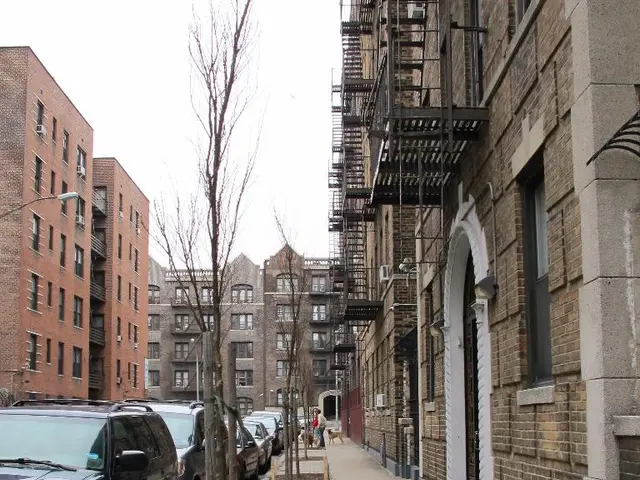Restored Legacy: John A. Roebling Bridge's Remarkable Revival by Wilhelm Hildenbrand's Craftsmanship
In the heart of the Ohio River, connecting Cincinnati and Covington, stands a testament to engineering prowess and historical significance - the John A. Roebling Suspension Bridge. The bridge, celebrating its 150th anniversary in 2017, owes its current form to the diligent work of a German-born civil engineer, Wilhelm Hildenbrand.
Born in Karlsruhe, Germany, Hildenbrand emigrated to America in 1867 after earning his engineering degree from the Polytechnic Institute there. His journey led him to play a crucial role in the reconstruction of the John A. Roebling Suspension Bridge in the 1890s, a fact not widely known.
The need for the bridge's reconstruction was driven by the introduction of electric streetcars into the area, which were heavier and larger than horse-drawn wagons and carriages. Six engineers, including Hildenbrand, were invited to submit proposals for the reconstruction project. Hildenbrand's proposal, after being approved by Bradford Shinkle, President of the Bridge Company, led to the commencement of work on August 17, 1895, and its completion in July 1899.
Hildenbrand's reconstruction plan resulted in significant improvements. The bridge gained a wider roadway, broader sidewalks, easier grades, and stronger stiffening appliances. These changes enhanced the bridge’s utility for rapid transit, pedestrian comfort, and vehicle freedom of movement. Hildenbrand also focused on preserving the bridge’s aesthetic value by incorporating double cable lines, gracefully arched trusses, ornamental railings, and harmonious architectural additions to the towers.
Hildenbrand's detailed report on the reconstruction includes a history of the bridge, his engineering plans, and before-and-after photographs. This report was preserved and donated to the Cincinnati History Library and Archives by his wife's family, underscoring his historical significance as an unsung hero of the bridge.
In recognition of his pivotal role, the Covington-Cincinnati Suspension Bridge Committee (CCSBC) recently installed a commemorative plaque on the bridge. Entitled "Reconstruction of the John A. Roebling Bridge," the plaque stands as a testament to Hildenbrand's dedication and skill.
Washington Roebling, son of John Roebling, highly recommended Hildenbrand for the job, stating that he is a competent and upright engineer with much experience and good design skills. Despite this recognition, Hildenbrand's role in the bridge's reconstruction has often been overlooked, with early histories of the bridge failing to mention him.
Hildenbrand's unpublished report about the reconstruction project explains that all other engineers considered the old structure worn out and worthless, recommending its complete removal and replacement. However, Hildenbrand proposed a different approach, demonstrating his innovative thinking and commitment to preserving the bridge's historical significance.
Working 14 hours daily on the reconstruction project, Hildenbrand put his heart and soul into ensuring the bridge's longevity and beauty. His efforts maintained the bridge’s reputation as aesthetically pleasing and structurally strong.
As we celebrate the 150th anniversary of the John A. Roebling Suspension Bridge, let us not forget the unsung hero, Wilhelm Hildenbrand, whose dedication and innovation have ensured the bridge's continued service and beauty. His report serves as a reminder of the need to seek recognition for such unsung heroes in our history.
In Northern Kentucky, Wilhelm Hildenbrand, a German-born civil engineer, significantly contributed to the reconstruction of the John A. Roebling Suspension Bridge in the late 1800s, especially in Covington and its neighboring city across the Ohio River, Cincinnati. Thanks to his outstanding work, the bridge’s utility became enhanced for rapid transit, pedestrian comfort, and vehicle freedom of movement, while its aesthetic value was preserved with double cable lines, gracefully arched trusses, and harmonious architectural additions to the towers.




